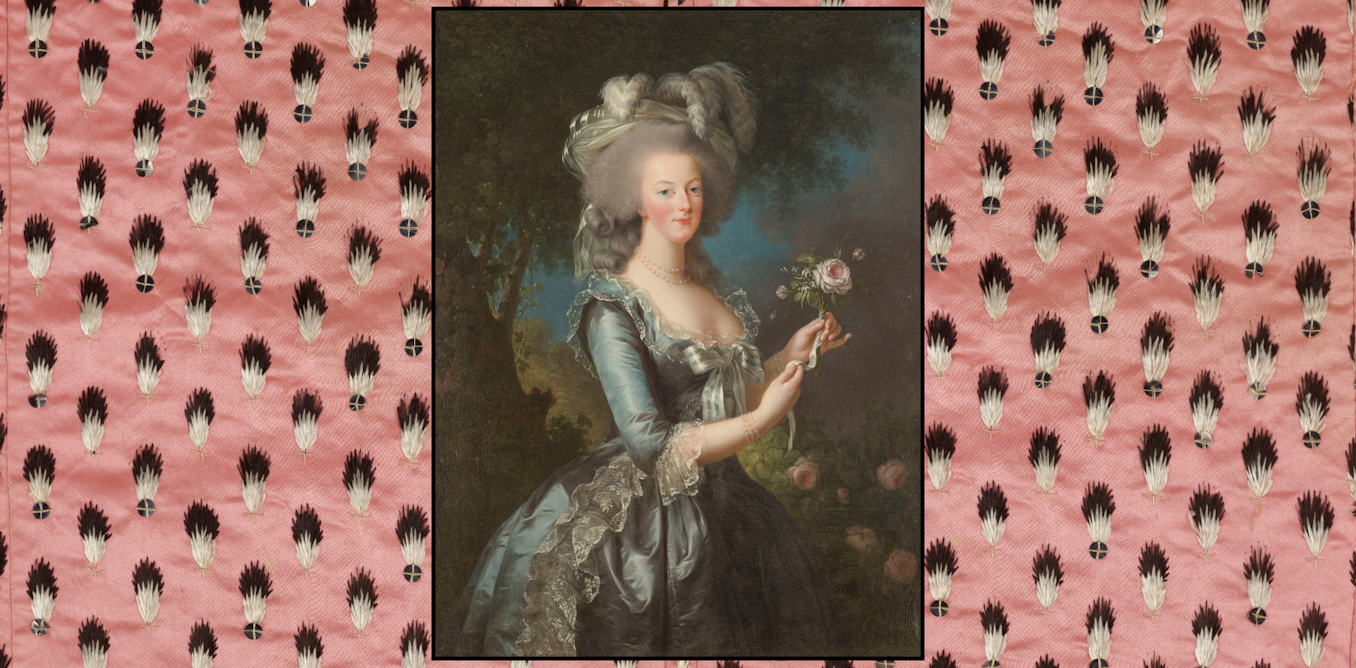Entertainment
Explore Marie Antoinette’s Legacy at the V&A Museum Exhibition

A new exhibition at the Victoria and Albert Museum, titled Marie Antoinette Style, offers a rare glimpse into the surviving elements of the wardrobe of one of history’s most infamous queens. Running until early 2024, the exhibit showcases not only garments but also cultural artifacts that illuminate the complex legacy of Marie Antoinette (1755-1793), the last queen of France before the French Revolution.
Upon entering the exhibition, visitors are immediately struck by the juxtaposition of opulence and fragility. A single, delicate shoe, worn and small, encapsulates the essence of the young queen. The initial display features an animated version of her portrait by Joseph-Siffred Duplessis, depicting a 16-year-old Dauphine who appears blissfully unaware of the turmoil that would shape her fate. This poignant representation serves as a reminder of the innocence that preceded the violent events of the Revolution.
The exhibition opens with a vibrant collection of gowns, including a wedding ensemble from Duchess Hedvig Elisabeth Charlotta, highlighting the youthful court of pastels that characterized French royal fashion. These garments, while visually stunning, are overshadowed by the few surviving pieces attributed to Marie Antoinette. The revolutionaries who condemned her sought to erase her legacy, destroying much of her wardrobe. What remains—a shift, some accessories, and an ivory silk gown embellished with silver spangles—offers tantalizing insights into her style and status.
Contrary to the perception of Marie Antoinette as a frivolous monarch, the exhibition presents her as a modern patron of the arts. Alongside her gowns, visitors can view furniture, porcelain, and iconic portraits, some of which have never been displayed in the UK before. A striking piece on display is a bowl allegedly modeled after the queen’s breast, believed to have inspired the design of the coupe glass. Furthermore, a replica of the infamous diamond necklace, associated with a scandal that tarnished her reputation, underscores the complexities of her public image.
As the narrative unfolds, the exhibition does not shy away from the darker aspects of her reign. Although her spending was not the primary cause of France’s economic woes, the queen became a target for public ire, earning the derogatory moniker Madame Déficit. The exhibition cleverly weaves this criticism into the experience, allowing visitors to engage with both the luxurious scents of the court and the foul odor of her prison cell, evoking a stark contrast between her past opulence and her grim fate.
Marie Antoinette was not entirely oblivious to the revolutionary sentiments brewing around her. The young queen evolved into a more sympathetic figure, demonstrating charity and social awareness. She recycled her garments for her staff, supported charities, and rejected ostentatious gifts. However, her efforts to support French industry, such as shifting from luxurious silks to simpler cotton gowns, led to unrest among silk weavers who depended on her patronage.
Transitioning into the latter part of the exhibition, visitors encounter a striking shift in atmosphere, with deep reds symbolizing her impending doom. The presence of a guillotine blade starkly reminds attendees of her tragic end. Yet, the concluding rooms celebrate her enduring cultural significance. Marie Antoinette has been reimagined in various artistic forms, from fancy dress costumes to cinematic portrayals, cementing her status in popular culture.
Despite her significant impact on fashion and culture, many of the myths surrounding her—such as the exaggerated tall wigs—are critically examined yet remain pervasive. The exhibition presents a visual feast, showcasing rarely seen artifacts, but it stops short of fully addressing the complexities of her legacy in contemporary narratives. The final impression left with attendees may indeed diverge from the reality of the young woman who began the exhibition with a shy smile.
With its unique approach to exploring the life and legacy of Marie Antoinette, the Marie Antoinette Style exhibition at the Victoria and Albert Museum invites visitors to reconsider not only the queen’s historical significance but also the myths that surround her. While the exhibition is a visual delight, the true essence of Marie Antoinette remains a complex interplay of fact and fiction, leaving audiences to reflect on the disparity between the iconic image and the real woman behind it.
-

 Health3 months ago
Health3 months agoNeurologist Warns Excessive Use of Supplements Can Harm Brain
-

 Health3 months ago
Health3 months agoFiona Phillips’ Husband Shares Heartfelt Update on Her Alzheimer’s Journey
-

 Science1 month ago
Science1 month agoBrian Cox Addresses Claims of Alien Probe in 3I/ATLAS Discovery
-

 Science1 month ago
Science1 month agoNASA Investigates Unusual Comet 3I/ATLAS; New Findings Emerge
-

 Science4 weeks ago
Science4 weeks agoScientists Examine 3I/ATLAS: Alien Artifact or Cosmic Oddity?
-

 Entertainment4 months ago
Entertainment4 months agoKerry Katona Discusses Future Baby Plans and Brian McFadden’s Wedding
-

 Science4 weeks ago
Science4 weeks agoNASA Investigates Speedy Object 3I/ATLAS, Sparking Speculation
-

 Entertainment4 months ago
Entertainment4 months agoEmmerdale Faces Tension as Dylan and April’s Lives Hang in the Balance
-

 World3 months ago
World3 months agoCole Palmer’s Cryptic Message to Kobbie Mainoo Following Loan Talks
-

 Science4 weeks ago
Science4 weeks agoNASA Scientists Explore Origins of 3I/ATLAS, a Fast-Moving Visitor
-

 Entertainment4 months ago
Entertainment4 months agoLove Island Star Toni Laite’s Mother Expresses Disappointment Over Coupling Decision
-

 Entertainment3 months ago
Entertainment3 months agoMajor Cast Changes at Coronation Street: Exits and Returns in 2025









